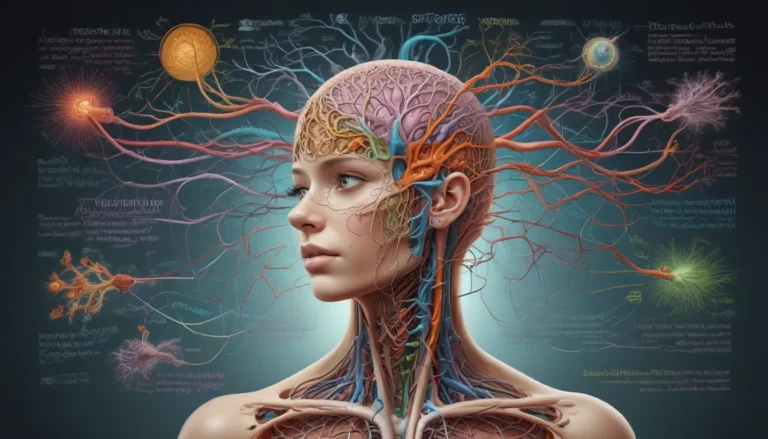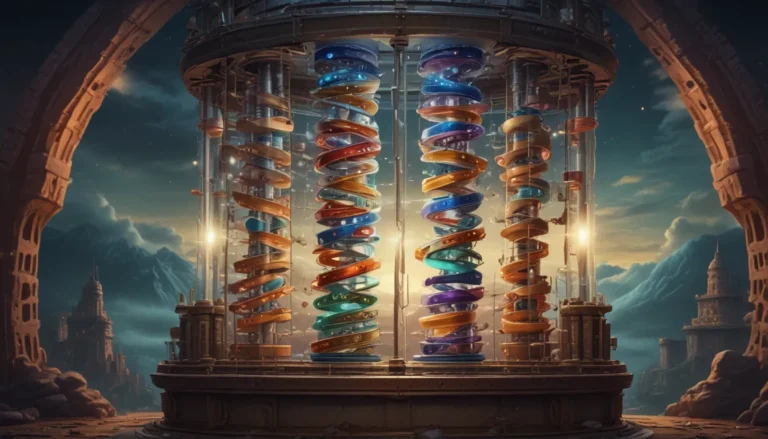A Note About Images: The images used in our articles are for illustration purposes only and may not exactly match the content. They are meant to engage readers, but the text should be relied upon for accurate information.
Non-disjunction is a captivating biological phenomenon that occurs during cell division, with profound implications for genetic disorders and abnormalities in humans and other organisms. Understanding the intricacies of non-disjunction can offer valuable insights not only for biology enthusiasts but also for scientists seeking to unravel the mysteries of genetics and its impact on human health. In this comprehensive article, we will delve into the captivating world of non-disjunction and explore 10 intriguing facts about this biological process. From its role in conditions like Down syndrome to its association with maternal age and genetic predisposition, each fact sheds light on the complexities and implications of non-disjunction.
Key Insights about Non-Disjunction
Let’s start by uncovering the key takeaways about non-disjunction, highlighting its impact on genetic disorders, genetic research, and prenatal screening. Understanding these key insights can pave the way for a deeper exploration of the fascinating world of non-disjunction.
- Non-disjunction can cause genetic disorders like Down syndrome and affects both humans and plants. It’s crucial for prenatal screening and contributes to genetic understanding and advancements.
- Non-disjunction can occur randomly or due to genetic factors, with a higher incidence in older mothers. Exploring the intricacies of non-disjunction is essential for making informed decisions about pregnancy and advancing genetic research.
The Diversity of Non-Disjunction: Meiosis and Mitosis
Non-disjunction can occur during both meiosis and mitosis, leading to a range of consequences and implications for genetic disorders. By understanding how non-disjunction affects these two distinct processes, we can appreciate the complexity of its impact on cell division and genetic stability.
During meiosis, non-disjunction can result in chromosomal abnormalities in gametes, potentially leading to genetic disorders in offspring. In contrast, non-disjunction in mitosis can cause anomalies in somatic cells, triggering a variety of health conditions.
The Role of Non-Disjunction in Down Syndrome
Down syndrome is one of the most common chromosomal disorders caused by non-disjunction, characterized by the presence of an extra copy of chromosome 21. This condition highlights the direct link between non-disjunction events and the development of genetic disorders with physical and cognitive impairments.
Factors Influencing Non-Disjunction
Different factors can contribute to the occurrence of non-disjunction, ranging from errors in chromosome segregation to genetic mutations, environmental influences, and age-related changes. Understanding these contributing factors can provide valuable insights into the underlying mechanisms of non-disjunction events.
Non-Disjunction in Sex Chromosomes and Autosomes
Non-disjunction is not limited to sex chromosomes but can also affect autosomes, leading to a variety of genetic disorders such as Turner syndrome, Klinefelter syndrome, Trisomy 18, and Trisomy 13. Exploring the impact of non-disjunction on different types of chromosomes enhances our understanding of its diverse consequences.
Genetic Predisposition and Non-Disjunction
While non-disjunction events can occur randomly, certain individuals may have a higher risk of experiencing non-disjunction due to genetic predisposition inherited from their parents. Understanding the genetic factors that influence non-disjunction can inform genetic counseling practices and advance research in the field.
Non-Disjunction and Mosaicism
In some cases, non-disjunction may occur after fertilization, leading to the presence of mosaic individuals with different chromosome numbers in distinct cell populations. Exploring the concept of mosaicism in non-disjunction broadens our understanding of the complexities of genetic variations within an individual.
Maternal Age and Non-Disjunction
Advanced maternal age is linked to an increased risk of non-disjunction events, particularly during meiosis and in relation to sex chromosomes. This association underscores the importance of age-related factors in understanding the frequency of genetic disorders like Down syndrome in babies born to older mothers.
Non-Disjunction in Plant Species
Non-disjunction is not exclusive to humans and animals but can also occur in plant species, contributing to genetic variations and potential implications for plant breeding and crop improvement. Exploring the occurrence of non-disjunction in plant species expands our knowledge of its impact on genetic diversity across different organisms.
Prenatal Screening for Non-Disjunction
Prenatal screening tests such as amniocentesis and chorionic villus sampling play a crucial role in detecting chromosomal abnormalities resulting from non-disjunction. These screening methods enable expectant parents to make informed decisions about their pregnancy and highlight the importance of early detection in genetic disorders.
Advances in Genetic Understanding through Non-Disjunction Research
Studying non-disjunction provides valuable insights into the complexities of genetics and chromosomal inheritance, leading to advancements in diagnostic tools, potential treatments, and genetic counseling practices. The research on non-disjunction contributes to our evolving understanding of genetic mechanisms and their implications for human health.
Conclusion: Appreciating the Marvels of Non-Disjunction
Non-disjunction is a captivating biological phenomenon with far-reaching implications for genetic disorders and abnormalities. By exploring the fascinating world of non-disjunction, we gain a deeper appreciation for the intricacies of genetics and its impact on human health. From the causes and consequences of non-disjunction to its role in genetic diversity and prenatal screening, each aspect highlights the complexity and beauty of the natural world at the cellular level.
FAQs: Exploring Common Questions about Non-Disjunction
-
What causes non-disjunction events?
Non-disjunction can be caused by genetic abnormalities, environmental influences, and maternal age, among other factors that disrupt the normal separation of chromosomes during cell division. -
Can non-disjunction be inherited?
While non-disjunction events can sometimes be inherited due to genetic predisposition, they often occur sporadically and are not directly inherited in most cases. -
How does maternal age affect non-disjunction?
Advanced maternal age is associated with a higher risk of non-disjunction during meiosis, particularly in relation to sex chromosomes, leading to an increased frequency of genetic disorders like Down syndrome. -
Can non-disjunction be detected during pregnancy?
Yes, non-disjunction can be detected prenatally through screening tests like amniocentesis and chorionic villus sampling, which analyze genetic material to identify chromosomal abnormalities. -
Are there treatments for non-disjunction?
While there are no specific treatments for non-disjunction itself, genetic disorders resulting from non-disjunction may have management strategies and supportive therapies to address associated health challenges.
By exploring these common questions about non-disjunction, we can deepen our understanding of this intriguing biological process and its relevance to human health and genetic research.
In conclusion, the study of non-disjunction offers a gateway to exploring the mysteries of genetics and the profound impact of cellular mechanisms on our well-being. By unraveling the complexities of non-disjunction, we gain a greater appreciation for the interconnectedness of genetic processes and their implications for human health and development. Let’s continue to marvel at the wonders of nature, from the smallest details in cell division to the vast complexities of genetic inheritance.
Remember, every cell division holds a universe of possibilities, shaping the intricate tapestry of life with each meticulous separation of chromosomes. Let’s embrace the beauty of non-disjunction and its role in the grand symphony of genetic diversity and human existence.






